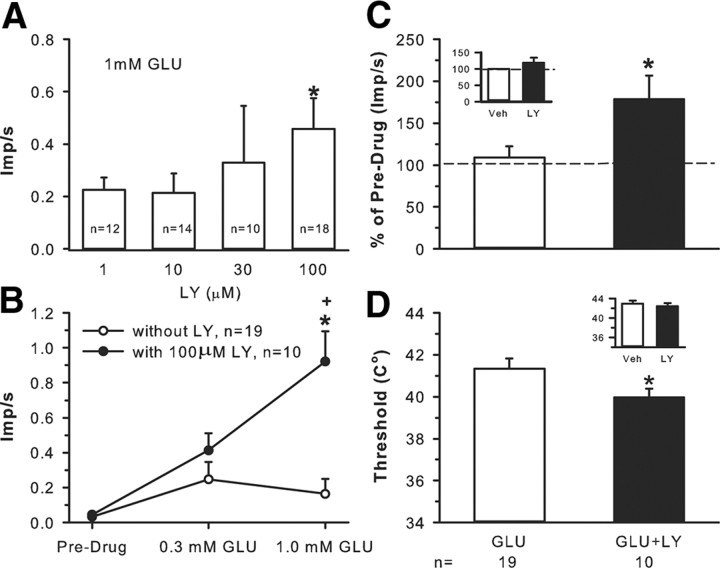Figure 5.
Exogenous GLU evokes activity-dependent inhibition of unit responses to heat. A, A dose–response study demonstrates that blocking mGluRs with increasing doses of LY (1, 10, 30, 100 μm) significantly enhanced 1 mm GLU-induced nociceptor discharge rate. B, Application of 0.3 or 1.0 mm GLU to the receptive field results in a slight increase in discharge rate. Addition of 100 μm LY + 0.3 mm GLU increases activity 64% over predrug levels. However, 100 μm LY + 1 mm GLU results in a fourfold increase (*p < 0.05, significantly different from predrug levels; +p < 0.05, significantly different from 1 mm GLU alone, two-way ANOVA followed by Tukey's test). C, Compared with vehicle, application of 100 μm LY to the receptive fields of nociceptors does not change heat-induced discharge rate (inset in C) or threshold to firing (inset in D). Application of 1.0 mm GLU alone produces a response no different from vehicle (Veh). However, blockade of group II/III mGluRs by 100 μm LY significantly enhances the heat-induced discharge rate (C) and lowers the threshold to activation (D) (*p < 0.05 significantly different compared with GLU alone, Mann–Whitney rank sum test).

